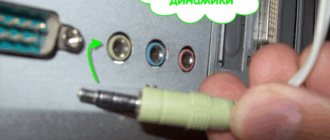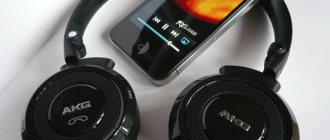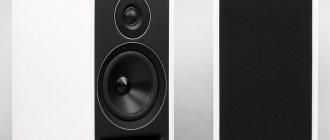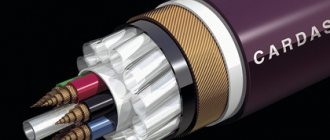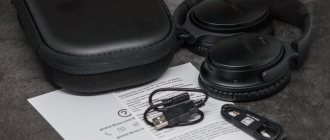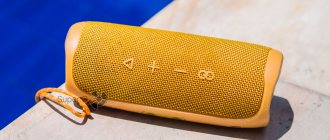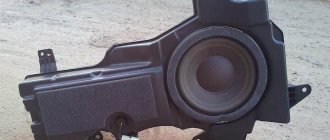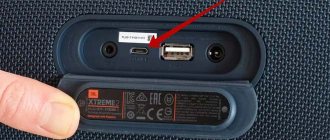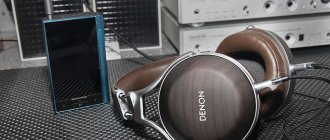People who have connected their lives with sound recording pay great attention to equipment for listening to audio material. Identifying defects that occurred during recording of vocals or instruments is a vital task for them. It is not possible if you use regular speakers or headphones. This is due to the fact that during playback the sound quality improves, making it as comfortable as possible for the ear. Manipulations distort the starting parameters of the composition. However, in another speaker system the sound will be completely different. It is possible to avoid such problems by achieving the correct musical balance, which is achieved through mixing and mastering. Experts note that in certain areas of the sound canvas, headphones will help to recognize problems with the formation of timbre and identify resonance. But for quality work, you need to think about purchasing studio monitors.
Features of studio monitors
In organizing a home studio, they come in second place after a sound card. Represents speaker systems that reproduce audio material without distortion. They are characterized by low power and a smooth amplitude-frequency response (AFC). The latter is critically important for professional recording studios. With their help, they monitor the balance of instruments, sound quality and recording (during performance). In other words, their task is to convey sound in its original state, without any distortion or embellishment. A professional studio monitor is a unique idea, materialized thanks to experienced designers and engineers. The materials used for manufacturing are advanced soundproofing and sound-absorbing acoustic materials. All components are subject to strict requirements:
- the speakers are accurate with a correctly calculated frequency response (“sound dips” and “blockages” are excluded!);
- class A circuitry;
- design and housing taking into account the laws of physics and acoustics;
- low-frequency speakers (LF) are made of reinforced fiberglass, polypropylene, Kevlar, impregnated paper and cellulose;
- high-frequency speakers (HF) - made of aluminum foil, paper, titanium, beryllium.
Based on the above, there is a significant difference between monitors and a home audio system. All this is necessary to reproduce audio material exactly as it was intended. Placement is of great importance, taking into account all the laws of acoustics. This is the only way the music will fill all the space between, and not from a specific speaker.
The equipment is necessary for those who are thinking about creating a home or professional studio. Indispensable for specialists involved in mixing tracks or vocals. Using simple speakers to listen to music is not the best solution. Since the resulting sound will not always be clear and beautiful, as we would like. In most cases, monitors are not used on stage.
What for
Well, we went through the design. Let's move on to the most important thing - the sound. The peculiarity of monitor acoustics is that they are monitor speakers. Pardon the tautology, but monitors are designed for monitoring - that is, by and large, for tracking shortcomings.
Genelec 8010APM - compact aluminum housing, separate amplification, XLR switching.
And this is what we get as a result if we exaggerate and highlight shortcomings. This is a smooth, clear and dispassionate sound in all details and in the full range of operation of our device. If you like it, then studio monitors are just for you.
How it works
All parts are enclosed in a housing, which is also called a cabinet. Made from wood, plastic, metal, MDF. As a rule, they are equipped with two speakers.
- Twitter reproduces high frequencies above 2 kHz. It has a cone shape. Placed at the top The material used varies by manufacturer;
- woofer, large speaker reproducing low and mid frequencies up to 2 kHz.
Some models have an additional speaker responsible for playing mid frequencies. An electromagnet is installed behind them; its task is to move the speakers using vibration. In this way a sound wave is obtained.
Most monitors are equipped with a phase inverter; it amplifies the low-frequency component of the signal. This is a hole with a pipe placed in the housing, it removes the pressure that is created inside the woofers. The shape and dimensions of the bass reflex vary depending on the manufacturer. It is located at the back or front of the panel.
No. 8 – JBL LSR305
Price: 11,500 rubles
The main advantage of the model is considered to be the fact that it implements Image Control Waveguide technology, which helps control sound in several planes.
Users also appreciate the low-frequency driver, which has rich, deep bass and is capable of playing specifications up to 43 Hz, which is very good for a device of such compact dimensions, by the standards of the segment.
JBL LSR305
The device is extremely easy to install and connect, but many complain that the bass reflex, main controls and connectors are located at the back, so it is not recommended to place the monitor close to the wall.
Active or passive monitor?
In order for the equipment to reproduce audio material, it must be amplified. Depending on the method used, there are:
Active
Equipped with built-in amplifiers, crossovers and everything necessary for normal functioning. Separate models with 2 amplifiers for low and high frequencies. All available connectors and inputs are installed on board: Canon, jack, tulip (XLR, TRS, RCA). There are devices with digital optical inputs.
Advantages:
- unlimited possibilities of use;
- use regardless of input type (digital or analogue);
- no need to purchase an amplifier;
- adapt to the room in which they are used;
- Properly selected circuit design reduces the risk of burning out the speakers and amplifier.
Flaws:
- a large number of wires;
- complex design requires qualified specialists;
- The sound engineer does not have the ability to change the volume level from the workplace.
Passive
Need an amplifier. It has a simple design. Due to the need to purchase additional equipment, as well as the presence of one input (analog, acoustic, or line mono jack), they did not become popular. The sound quality is affected by: the selected amplifier, the connecting cables used and the connectors used.
Advantages:
- easy installation;
- only 1 wire;
- no additional built-in equipment is provided;
- simple repairs and diagnostics;
- the organization of the acoustic space was approached with due attention;
- the sound engineer can adjust the volume at the workplace.
Flaws:
- you need to purchase an amplifier;
- analog input (acoustic or linear);
- monolithic installation;
There are ongoing disputes among experts about who should take the palm. Each group has undeniable advantages and disadvantages. There is an opinion that devices that perform only one function cope better with it than multitasking ones. Looking back at this, some people prefer passive studio monitors. But technology does not stand still; the efficiency of combined devices has increased significantly. This gave talented people the opportunity to record material in studio quality without leaving home for reasonable money.
Pioneer DM-40
Woofer: 4” | Twitter: ¾”, Deco Convex| Amplifier: Class A/B | Power: 21 W/channel | Frequency range: 70 Hz – 30 kHz
Pros:
- Bluetooth
- High quality components
- Elastic tight bass
- Front bass reflex port
- Front panel volume knob
Minuses:
- No limiter
- No frequency response regulators
Pioneer DM-40BT is a set of two 2-way monitors aimed at music lovers, producers and DJs. Each speaker features a front-port Bass Reflex design and features a 4" fiberglass cone woofer and a ¾" dome tweeter using DECO technology. Proper placement of the drivers results in perfectly balanced sound. The left speaker is active and equipped with a Class A/B amplifier with a power of 21 W per channel.
The Bluetooth interface allows you to play music from mobile devices, and support for aptX and AAC codecs improves sound quality. On the front panel of the left monitor there is a volume control and a headphone output. To connect a wired signal source, RCA and minijack inputs are provided. The special housing shape reduces unwanted resonances.
What are they?
Professional studios are equipped with several lines. Location influences purpose.
- Near field. The most common group. Placed on the sound engineer's table or special stands. They are characterized by high-quality transmission of mid and high frequencies. Without them it is impossible to mix a track or edit a soundtrack
- Middle field. They help create acoustic effects that cannot be recognized up close. Reproduce low frequencies. As a rule, three-way models are used for mixing audio material.
- Far field. They listen to the resulting composition and the album as a whole at any volume level and in all frequency ranges. Used in large studios, for mastering and working with dance music.
IK MULTIMEDIA iLoud MTM
The purity of sound in the frequency range from 40 Hz to 24 kHz is inherent in the IK MULTIMEDIA iLoud MTM model.
It has a significantly expanded lower frequency range with the reproduction of phase-coherent sound over short distances. The device has a built-in ARC automatic calibration system and DSP control with synchronization accuracy.
Pros:
- symmetrical design;
- mount with the ability to change the angle of inclination;
- compactness;
- powerful bidirectional amplifiers;
- balanced bass;
- calibration function;
- good equipment.
Cons: none identified.
How to check before buying?
To make the right choice, knowing the characteristics of monitors alone is not enough. The ears themselves play an important role. Any indicators pale before the fact that the equipment that interested the specialist does not sound good. The studio people are sure to listen! Before starting this process, you should ensure that it technically fully meets the expected requirements. Listening will bear fruit if you follow simple rules.
- Use only familiar, high-quality recordings. This is the only way to fully appreciate the sound quality.
- Listen at different volumes. The sound does not change depending on the volume level.
- Trust your own intuition. If listening did not provide an understanding of all the subtleties of the performance and did not allow one to distinguish between resonances and distortions, and the audio file seemed balanced, you need to pay attention to other monitors.
About the choice
We recommend writing down the criteria that you personally think are the most important for solving creative problems. With the criteria written out before your eyes, go through our top monitors again and choose the one that suits you. Remember - the subjective perception of the picture is important, especially if you want to enjoy your work, but an irrational choice “from feelings” will certainly lead to mistakes and wasted money. Look at the frequency response, compare the functionality, take into account in which room the monitors will be installed.
What to look for before purchasing
Woofer size
When it comes to near-field devices, their diameter ranges from 3 to 9 inches. The required size is influenced by the area of the room where they will be installed (for a small room - appropriate woofers). For large speakers, the reproduced frequency range mark is at the minimum line. Due to this, long bass waves will have nowhere to dissipate, they will accumulate in the corners, and the purity of the sound will be disrupted.
The size is selected depending on the area of the room and feasible tasks. In other words:
- You can voice over podcasts, videos, audio books, and foreign language lessons with models that have a speaker size of 3 inches or more, since the voice does not carry useful information below 100Hz.
- Rock music, monitoring the recording of live instruments and vocals, and creating demo recordings do not require large volume speakers. Often everything below 30 - 50 Hz is cut off on the master bus. As a result, all that remains from the instruments is a hum. Monitors that reproduce smooth and detailed sound are recommended.
- For electronic music, correct reproduction of low frequencies and dimensions play an important role. 8 inches are optimal.
Woofer material
Well-known brands are constantly searching for the optimal solution. Among the main requirements are: lightness, for fast movement and resistance to deformation. Many people prefer paper impregnated with special compounds. There are Kevlar and polymer carbon fiber speakers. Polymers are not loved by experts because of the lag when playing transients (soft drum sound and smoothing out of small details). Kevlar diffusers are highly durable, light weight and reliable. The favorable impressions are disrupted by the need for a complex crossover system. When choosing a suitable model, you should remember that not every specialist will notice the difference in the material used, and there is nothing to say about beginners.
A few words about the bass reflex
It is a special tube installed inside the housing and reduces the pressure inside it and acts as an irritant that causes the air to resonate at ultra-low frequencies. With it, the system demonstrates the performance of low frequencies at a level that cannot be achieved without a bass reflex.
For a home studio, the best option is a speaker with a device on the front panel. They are installed 30 cm from the wall. If the bass reflex is at the rear, the minimum distance is 1 meter. Otherwise, the bass will reflect off the wall and create resonance.
Is a subwoofer really that important?
Necessary to expand the range of reproduced frequencies. To do this, you will have to pay more attention to preparing the room. A small room will not fully reveal the bass. During installation, you can observe dips and peaks in volume; some bass notes will become hard, while others will become cloudy.
The subwoofer looks like a weighty box with a large speaker, the movement of which shakes the whole room. It is necessary to adjust the cutoff frequency where the monitor is not enough.
The need for purchase is determined by the type of work with sound. Mixing for TV will require control with multiple speakers and a subwoofer. First of all, you need to focus on your audience.
Amplitude-frequency response (AFC)
Smooth without dips or peaks. For the convenience of users, manufacturers provide graphics for each model on the website. It is necessary to understand that a perfectly smooth schedule does not exist. Differences not exceeding 3 - 5 dB are allowed.
#6 – Mackie CR3
Price: 10,400 rubles
Mackie CR3 is a universal solution from the mid-budget segment. In reviews, users report that it is great for both mixing and listening to music.
Alone, the device is capable of providing sound to a room of up to 25 square meters, which is very good for such a price. The main controls are located on the main speaker, as are the auxiliary jacks. There is a button for swapping monitors.
Mackie CR3
In terms of price-quality ratio, the model will be an excellent option for anyone planning to create a home studio. It is capable of producing clear sound with high volume in the near field and has several foam pads included. Among the minuses, we highlight the lack of bass.
You may be interested in: 10 best hair clippers by reviews, price and quality
Tips to make working with studio monitors easier for beginners
- Start with low volume. As a rule, they reveal themselves at 10 - 20 W. They pay more attention to sound pressure.
- The equipment is sent to the specialist’s ears. This will allow you to fully recreate the impression of the composition.
- Every 2 hours for a break.
- Don't rely solely on studio monitors. As an additional control, the result is reproduced in headphones or home speakers.
- Do not touch the speakers with your hands. To remove dust and dirt, use a special brush.
- Due to the strong heating, special attention is paid to the cooling system. Provide free access to air.
- The network and signal cables must not cross each other. This negatively affects the sound quality.
- It is prohibited to place foreign objects on top.
- The start of work is accompanied by a certain sequence; after connecting to the network, at least 10 seconds pass.
Best Budget Studio Monitors
Nux PA-50
The two-channel with a power of 50 W received a 6.5 inch woofer and a 1 inch tweeter. It has an almost flat frequency response and a full range speaker. It is possible to connect the instrument directly.
Nux PA-50
Advantages:
- three-band equalizer;
- high-precision input compatible with IR loaders (Nux Solid Studio);
- It is possible to connect a microphone via channel 2.
Flaws:
- made in China;
- There is no bass reflex.
BEHRINGER STUDIO 50USB
The German company confidently occupies a leading position in the market of professional audio equipment and musical instruments. A wide range of products is available for customers of all categories.
The new product has joined the line of budget equipment. I received two speakers with a 75 W bass reflex. The highlight was the Bi-amp mode with separate amplification for each speaker. This improves the quality of high-resolution audio transmission. The signal comes out intact.
BEHRINGER STUDIO 50USB
Advantages:
- ability to connect via USB;
- 1" silk tweeter;
- five-inch woofer;
- magnetic shielding protects against interference coming from the PC;
- Illuminated volume control.
Flaws:
- bass reflex in the rear;
- the quality of materials and workmanship is satisfactory;
- At high volumes, low frequencies are distorted;
- high level of own noise;
- does not support the ASIO protocol.
Pioneer S-DJ50X White
Active speakers from a company that needs no introduction will help novice DJs hone their skills. They reproduce compositions with maximum accuracy. The built-in equalizer takes sound quality to the next level. I received a one-inch tweeter developed using DECO convection diffuser manufacturing technology from TAD. Bi-amp amplification contributed to obtaining a balanced reproduction of all frequencies without loss.
Pioneer S-DJ50X White
Advantages:
- midfield monitors;
- woofers are made of aramid fiber;
- the bass reflex has grooves that direct sound waves;
- the system is equipped with the ability to switch between 4 inputs;
- adjusting the high frequencies will make it easier to tune the system to a specific room.
Flaws:
- LED indicator is too bright;
- long-term operation at high volume levels leads to heating;
- The delivery set includes only a power cable;
- questionable quality of joints and rim around diffusers;
- no bass adjustment;
- perform poorly at ultra low frequencies;
- white body.
YAMAHA HS7
This two-way monitor is a professional device.
It features a 6.5-inch woofer and an advanced electromagnetic structure. The accuracy of frequency reproduction is influenced by carefully selected materials. The presence of a dome high-frequency tweeter facilitates the transmission of wide range frequencies while minimizing distortion.
Pros:
- original body design;
- good sound;
- the ability to adapt to a room of any size and shape;
- highly efficient power amplifier;
- connection to various sound sources.
Minuses:
- low sound detail;
- insufficient accuracy of the panoramic signal.
The best studio monitors in the mid-price segment
PreSonus Eris E44
Among many other competitors, it stands out due to its unique design; a tweeter was placed between two low-frequency units. It is radically different from the well-known D'Appolito scheme. According to the manufacturers, this solution made it possible to achieve the most effective response. Off-axis listening and spatial placement. As a result, the user receives a smooth frequency response and a three-dimensional sound picture.
PreSonus Eris E44
Advantages:
- speakers with Kevlar cone;
- total amplifier output power 85 W;
- Can be installed in a horizontal or vertical position, at the discretion of the user;
- Soft Start suppresses clicking sounds when power is applied;
- TRS, XLR connectors and RCA input;
- protection against overheating, radio interference, output current limiter;
- adjustment of low and high frequencies in the range from -6 to +6 dB;
- three-position Acoustic Space switch suppresses bass depending on the position in the room;
- The Low-Cut filter simplifies the work with the subwoofer.
Flaws:
- not common on shelves.
ROKIT 8 G3 KRK
KRK is known to many music professionals. It has been producing equipment for a long time and has been able to establish itself on the positive side.
This is an updated representative of the third generation of two-way active equipment ROKIT 8. The near-field speakers received an 8-inch woofer with a fiberglass-reinforced membrane. The solution ensured the reproduction of dense low frequencies.
The 1-inch dome diaphragm tweeter is made of natural silk and neodymium magnet. The combination enhances the natural reproduction of high frequencies.
ROKIT 8 G3 KRK
Advantages:
- dual class A/B amplifier;
- magnetically shielded equipment can be placed next to the computer;
- front bass reflex;
- smooth frequency response.
Flaws:
- the need for a balanced connection;
- there is no speaker protection grille;
- heavy weight;
- problem with high frequency reproduction.
JBL LSR705i
The famous brand JBL has expanded its product line with a new model. It is designed for multi-channel use. It features patented technologies previously seen in the flagship M2. Continues the traditions of the series, detailed sound, wide frequency range and ergonomic body.
JBL LSR705i
Advantages:
- birch plywood body;
- Patented Image Control waveguide coordinates the direction of the woofer and tweeter at the crossover point for neutral, off-axis response;
- the Phoenix terminal directs the monitor to the same channel as the amplifier;
- The 7 Series is part of the company's modular system, built around Harman BSS network controllers/processors and Crown multi-channel amplifiers.
Flaws:
- no built-in amplifier;
- there is a lack of bass;
- insufficiently high maximum playback frequency;
- the quality of the material is questionable.
KRK RP7 G4
Woofer: 6.5” Kevlar | Twitter: 1”, Kevlar| Amplifier: double, class D | Power 145 W| Frequency range: 42 Hz – 40 kHz | Sound pressure: 110 dB| EQ: DSP based with display and 25 presets
Pros:
- Large listening area
- Equalizer with display and presets
- Application for iOS and Android with analyzer
- The port is located frontally, monitors can be placed against the wall
- Removable front panel
- Optional mesh front panel
Minuses:
- Not detected.
KRK RP7 G4 is equipped with a 6.5" woofer and a 1" tweeter with Kevlar membranes. Separate HF and LF amplification is provided by a 145 W class D bi-amp amplifier. 25 equalizer presets allow you to quickly and accurately adapt the sound to the room.
The controls are extremely simple and consist of a volume control and a switch. You can control it using the KRK App for iOS and Android devices. A limiter is provided to protect against overload. Monitor connection is made using one combined XLR/6.3 mm balanced input.
The best premium studio monitors
Dynaudio LYD 8
The LYD series has long been known to everyone involved in working with sound. Accuracy, realism and power helped win the hearts of fans. The new representative has acquired an 8-inch speaker and is currently the largest in its series. One of the best solutions for compact rooms and home studios.
Dynaudio LYD 8
Advantages:
- smooth frequency response;
- wide spread angle;
- the rear panel has a built-in slotted bass reflex, creating a peak pressure of 112 dB;
- Standby Mode provides automatic shutdown;
- each speaker received its own amplifier;
- low-cut switchable bass filter;
- made in Denmark.
Flaws:
- It is not possible to adjust the sound with the wheel;
- easily soiled body.
Adam A77X
The highlight is the horizontal design previously used in the SX series midfield speakers. It received the same technologies as the A7X. In order to see the differences, it is enough to pay attention to the sound pressure level in the high-frequency range without compression. Has a wide and uniform pattern.
The A77X's special feature is its 2.5-way system. The size of 2 woofers is 7 inches, 38 Hz is sufficient for operation. The range of the first is limited to 400 Hz, and the second has a limit at around 3 kHz. Such indicators eliminate the occurrence of interference and phase distortion in the mid-range.
It has a wide stereo background and a bright stereo panorama. Mid and high sounds are played with 3D realism, the lows are expectedly massive and accurate.
Adam A77X
Advantages:
- carbon diffuser;
- X-ART ribbon tweeter;
- stylish design;
- detailed high frequencies without dips;
- XLR and RCA connectors.
Flaws:
- heavy weight;
- low quality built-in amplifiers;
- small sound field;
- Full operation with low frequencies is possible only with additional equipment. Since they are heard in close proximity;
- The delivery package does not include mounting brackets, brackets and grills.
Prodipe PRO8V3
This model features a fiberglass woofer cone, neodymium tweeters and new electrical circuits that improve sound quality.
The device body is made of high-strength wood. It provides better focusing and prevents vibration. Diffusers increase the dynamics and naturalness of acoustics. The monitor's active filtering has been completely updated, protecting against all kinds of distortion.
Pros:
- high-quality case;
- decent sound;
- normal amplifier;
- there is detail;
- undemanding to the premises;
- good stereo separation;
- large 5-inch midrange driver;
- attractive price.
Cons: the boards are not made from the highest quality components.
